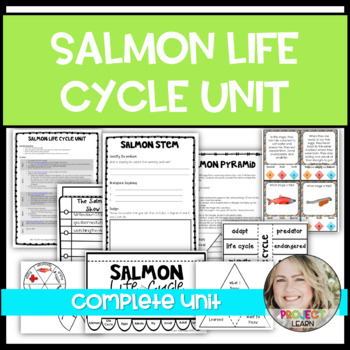Salmon Life Cycle Unit
- PDF
What educators are saying
Description
This unit provides everything you need to teach the life cycle of salmon. There are links to videos, reading passage, STEM activity, outdoor activity, poke cards for review, flip book and more! The unit plan outlines what to teach and when. Students will be engaged and love learning about salmon. Learning about the salmon life cycle is so fun! Students love it!
Included in this resource:
•Detailed Unit plan - 6 days
•Salmon Life Cycle Text
•Salmon KWL
•The Salmon Show Note Catcher
•Salmon Pyramid Text
•Salmon STEM Lesson Plan students will create a way for salmon to go over dams
•Salmon STEM Planning Guide
•Salmon Life Cycle Flip Book – 2 Versions: Filled in, Fill in the blank outlines each stage of the salmon life cycle (details, time, & threats they face)
•Salmon Life Cycle Poke Cards
•Vocabulary Notebook flip – 2 versions
•Salmon Life Cycle Spinner – 2 versions





